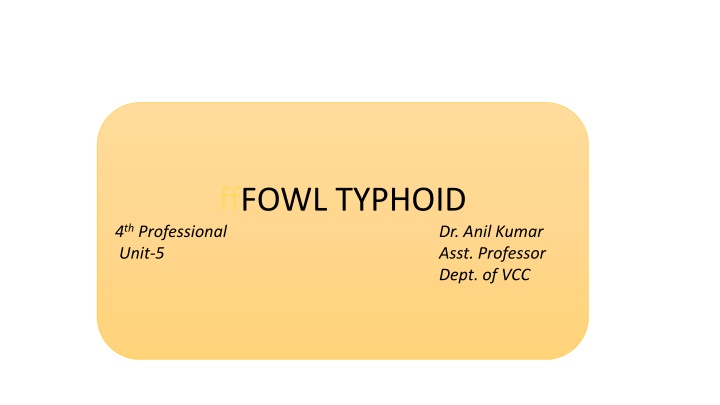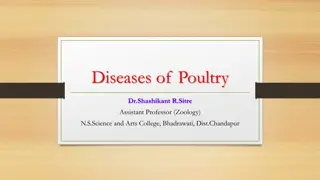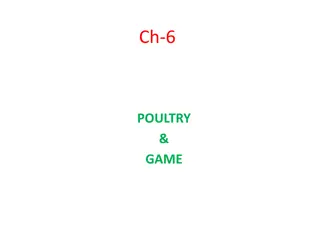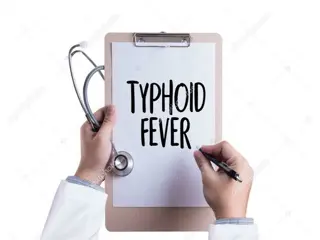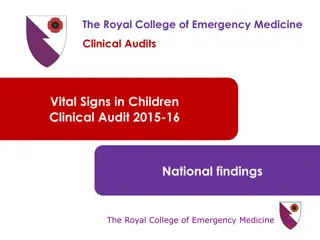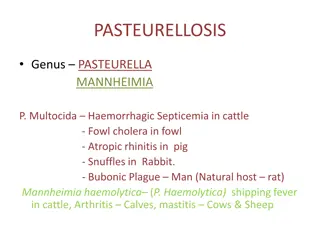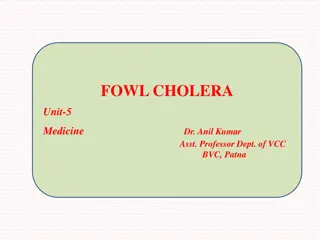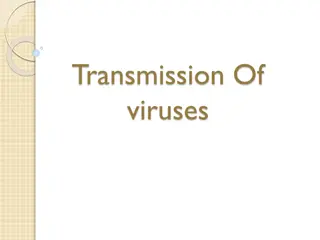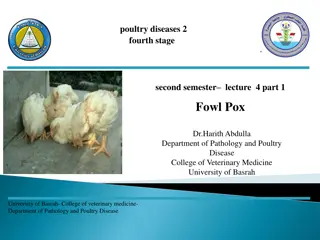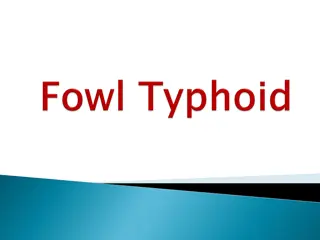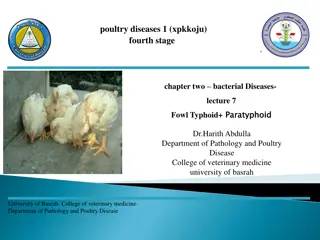Fowl Typhoid: Causes, Transmission, Clinical Signs, and Control Measures
Fowl typhoid, caused by Salmonella gallinarum, affects adult chickens with high mortality rates. It spreads through infected droppings, carcasses, and fomites. Clinical signs include listlessness, diarrhea, and organ swelling. Diagnosis involves isolation and identification, while treatment options include sulphonamides and biosecurity measures. Administering vaccines can help prevent outbreaks.
Download Presentation

Please find below an Image/Link to download the presentation.
The content on the website is provided AS IS for your information and personal use only. It may not be sold, licensed, or shared on other websites without obtaining consent from the author.If you encounter any issues during the download, it is possible that the publisher has removed the file from their server.
You are allowed to download the files provided on this website for personal or commercial use, subject to the condition that they are used lawfully. All files are the property of their respective owners.
The content on the website is provided AS IS for your information and personal use only. It may not be sold, licensed, or shared on other websites without obtaining consent from the author.
E N D
Presentation Transcript
ffFOWL TYPHOID 4th Professional Unit-5 Dr. Anil Kumar Asst. Professor Dept. of VCC
Fowl Typhoid Etiology: Fowl typhoid is caused by Salmonella gallinarum, which is related to, but not identical to, S. pullorum. Transmission: Fowl typhoid is more a disease of adult chickens, with high mortality and morbidity. Vertical and lateral transmission occurs Horizontal transmission is important with fowl typhoid through infected droppings, dead bird carcasses, and infected clothing, shoes, utensils and other fomites. Host affected: Chickens, pheasants, ducks, geese and guinea fowl can contract both fowl typhoid.
Clinical signs: Fowl typhoid in adult chickens causes listlessness and sulphur coloured diarrhoea. The birds have generalized infection with swollen livers, spleens, and kidneys and haemorrhages in such tissues. Mortality is usually high: 25 to 60 %. Diagnosis: Isolation and identification. The rapid whole blood plate agglutination test will demonstrate antibodies approximately 2 weeks after infection and can be used to screen flocks for reactors Treatment and control: Treatment is inappropriate for breeding flocks, which should be depleted. Commercial laying flocks may be salvaged under specific conditions by administering furazolidone or tetracycline in feed at 400 g/ton.
Various sulphonamides (sulphadiazine, sulphamerazine, sulphathiaole, sulphamethazine and sulphaquinoxalin), followed by nitrofurans and several other antibiotics have been found to be effective in reducing mortality Appropriate biosecurity measures Administration of live 9R strain S. gallinarum vaccine during the rearing period will eliminate outbreaks of clinical disease.
